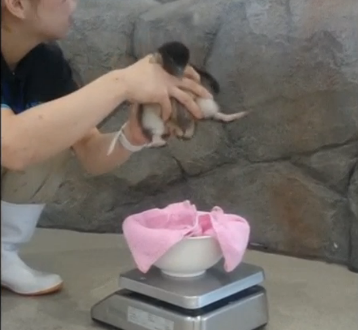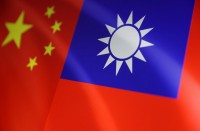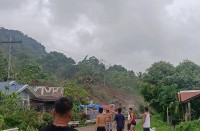(Reuters) — Japan has succeeded in producing the world’s first penguin conceived through artificial insemination after six years of research aimed at developing technology to preserve the endangered species.

In the video that Osaka Aquarium Kaiyukan shared with Reuters, a caretaker is seen weighing the young southern rockhopper penguin and saying she has gained weight.
The chick is healthy, according to the aquarium, and put on the scales every day, growing at a rate that has exceeded their expectations – she was born on June 6 and, in a month, has gone from weighing 48.2 grams to 1,210 grams.

The aquarium teamed up with Kusunoki Hiroshi, an associate professor at Kobe University Graduate School of Agricultural Science, for the project, which started by looking at how the species reproduces. They were later helped by Tokyo Sea Life Park in order to get hold of a healthy sperm sample from a male penguin.
A member of the Public Relations Team at the aquarium, Mami Tanaka, told Reuters by email that the joint research will continue with the hope it can help the endangered species’ breeding rate.
The southern rockhopper penguin is native to islands near Antarctica, including the Falklands, and is listed as a threatened species on the red list of the International Union for Conservative of Nature.








